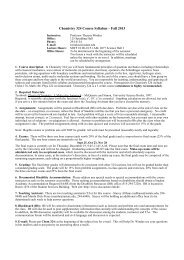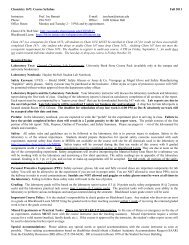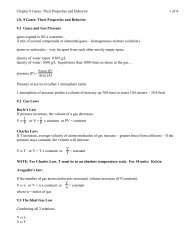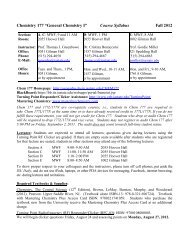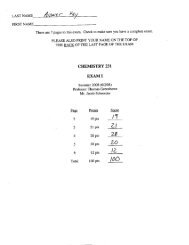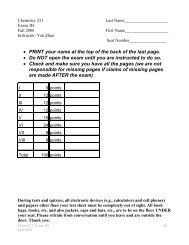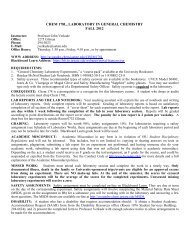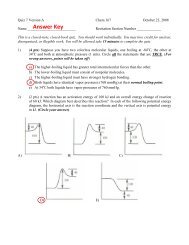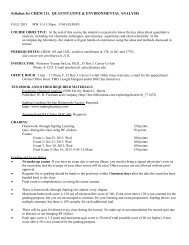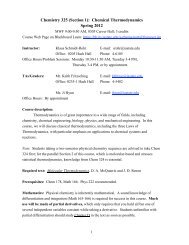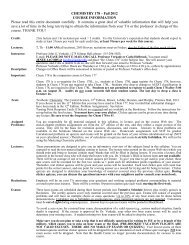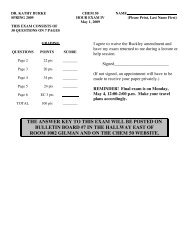Create successful ePaper yourself
Turn your PDF publications into a flip-book with our unique Google optimized e-Paper software.
PART I – Multiple Choice. (18 questions at 3 pts each = 54 pts total)1. Covalent bonding is aa) gain of electrons. c) transfer of electrons.b) loss of electrons. d) sharing of electrons.2. Which bond should have the longest length?a) N–N c) N≡Nb) N=N d) all three bond lengths should be about the same3. The average Cl–Cl bond energy is 243 kJ/mol. Therefore, the formation of a single bond betweenchlorine atomsa) should require the absorption of 243 kJ per mole of Cl 2 formed.b) should require the absorption of 486 kJ per mole of Cl 2 formed.c) should result in the release of 243 kJ per mole of Cl 2 formed.d) should result in the release of 486 kJ per mole ofCl 2 formed.4. The electronegativity for both sulfur and carbon is 2.5. Therefore, the compound CS 2 would beexpected to2a) be ionic with C as the anion. c) have nonpolar covalent bonds between C and S.b) be ionic with C as the cation. d) have polar covalent bonds between C and S.5. Which is the most acceptable electron dot structure for carbonyl fluoride, COF 2 ?CCOOa) F O F b) F O F c) F C F d) F CF6. Which molecule contains a triple bond?a) F 2 b) O 3 c) HCN d) H 2 CO7. Which of the following are allowed resonance forms of NCS – ?__I N C S and N C S_II N C S and N C S_III N C S and S C N__a) only I b) only II c) only III d) I and III



